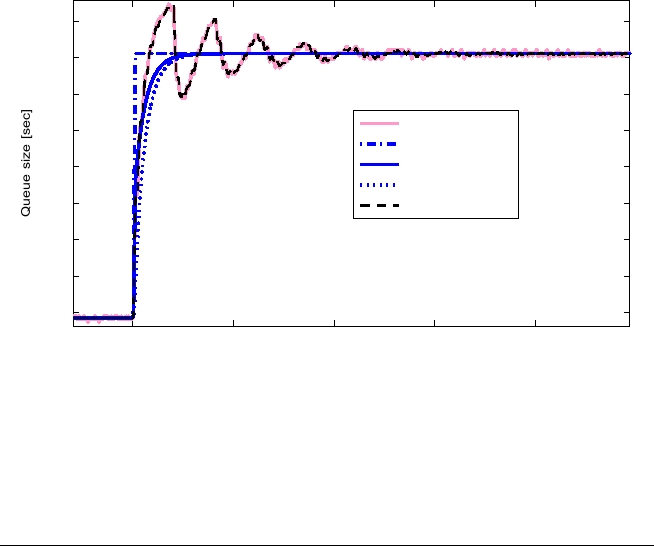0.018
0.017
0.016
NS-2
0.015
Static link model
Joint link model
0.014
Integrator link model
0.013
DAE link model
0.012
0.011
0.01
25
25.5
26
26.5
27
Time [sec]
Figure 75: Result of algebraic link model studies showing conditions under which FAST,
which is normally very stable, can be made to oscillate. The results are compared to NS-2
simulations
The above model was used to determine conditions under which FAST causes the data rate to
oscillate. Experiments in these conditions demonstrate that FAST causes the rate to oscillate less
than standard TCP, and less than most proposed replacements.
MaxNet and ADPM:
Work has also been put into the design and implementation of the MaxNet TCP network
congestion control protocol. MaxNet uses explicit multi-bit signaling from routers to achieve high
throughput and low latency over networks of arbitrary capacity and topology and virtually any
delay. MaxNet also overcomes a major problem with the current TCP, namely that short flows
start transmitting too slowly, hampering interactivity. The MaxStart algorithm allows MaxNet to
fill the transmission pipe with data just one round trip time (RTT) after the first packet.
The MaxNet algorithm has recently been extended to give both provable stability and rate
fairness [4], [5]. The implementation is based on the Linux Traffic Control framework. The
system consists of a sender and receiver TCP algorithm as well as a router module. Performance
has been tested for capacities up to 1Gbit/s and delays up to 180 ms using the WAN-in-Lab
facility. With no overhead but 24-bit price signals, MaxNet can scale from 32 bit/s to 1 Peta-bit/s
with 0.001% rate accuracy.
123

